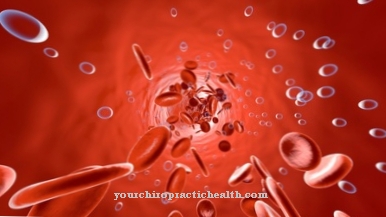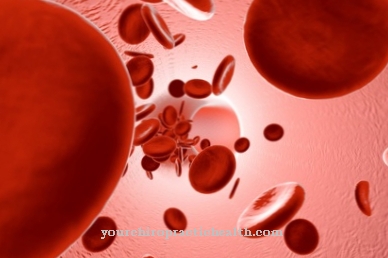The Pubescence denotes male puberty. The boy reaches sexual maturity and then enters puberty, during which secondary male body features develop and the psyche evolves into the adult stage.
What is pubescence?

Pubescence describes the onset of puberty and, strictly speaking, only means the achievement of sexual maturity in boys, not the resulting developments. Thus, pubescence usually occurs at an early stage in puberty and, from a biological point of view, turns a boy into a man. He is now physically able to father children of his own.
Pubescence is noticeable through the spermarche, the first ejaculation - it is comparable to the first menstrual period in girls. It also occurs around the same time, deviations up and down are normal.
Pubescence marks the end of a developmental process in which the sexual organs mature to their adult function. Since this increases the testosterone level in boys, physical developments such as the growth of armpit, pubic and facial hair follow as a consequence of pubescence.
Many boys also change their character as a result of the rising testosterone level, for example they develop their first sexual interest in girls and women. At the same time, pubescence can also reveal health problems in boys that were not yet apparent in childhood. That is why a certain amount of medical supervision and observation of the development processes in adolescence is crucial, which is partly covered by the last U-examinations.
Function & task
The task of pubescence is to enable a boy to father children. With the hormone thyroxine, the thyroid gland plays a crucial role in starting pubescence. Finally, the first sperm are produced and the first ejaculation occurs, which is indicative of the completed pubescence.
However, humans differ from almost all other mammals in that the process of sexual maturity is extremely slow. After pubescence, a boy is basically able to father his own children, but the number of sperm cells and the quality will continue to increase over the next few months and years.
In addition, other physical characteristics develop through pubescence, since it is the beginning of a long-lasting physical and psychological maturation process. Physically, increased testosterone levels over the years lead to an increase in body hair, the development of muscles, male facial features and also to changes in character.
Boys sometimes become more aggressive after pubescence, but are also increasingly interested in women and girls.
Unlike many other mammals, boys are only physically able to father children after pubescence. From a psychological point of view, they are still far too young for this and therefore have to be careful for a while to use proper contraception as soon as they become sexually active.
The benefit of pubescence in humans consists less in having children of their own than in the physical development of the boy into an adult man over the next few years. Pubescence is followed by other physical developments that are crucial for healthy physical functions in adulthood.
Illnesses & ailments
Puberty is sometimes a very stressful and difficult time for both girls and boys, as a lot of things change physically and nothing seems to go as it should.
Although most young people are healthy, pubescence in boys can provide the first clues about health problems that were previously unknown. Most of the difficulties arise at the hormonal level, as the hormones that are now formed are responsible for starting the physical development of the boy into the man. If this is not done correctly, physical impairments are often permanent.
Since the thyroid gland plays such a vital role in pubescence and later puberty, diseases in it can lead to pubescence occurring late or not at all, and thus puberty being impaired. Tumors or even removal of the thyroid gland slow down the process of sexual maturity and are often only discovered in this way - if they were previously unproblematic. Even (harmless) tumors on the pituitary gland in the brain are often discovered through an unusual course of pubescence.
Hyperthyroidism and hyperthyroidism, on the other hand, are easier to treat, but they too would make themselves felt through disorders of pubescence and puberty. In addition, defects in testosterone receptors can lead to unusual sexual maturation processes in boys.
The premature onset of puberty, which also leads to earlier pubescence, is less disturbing, but also unusual. In addition to a genetic predisposition, other factors can also play a role here. However, the so-called precocious puberty must be examined more closely in each case. It can be triggered by an overactive thyroid or hepatocellular carcinoma and would be a first symptom.
The consequences of deviating pubescence and puberty can be reduced fertility or incomplete physical developments, such as underdevelopment of the sexual organs. In an emergency, these would be irreversible, because in healthy boys they are controlled by hormones and these can no longer be added to the body afterwards.












.jpg)



.jpg)










.jpg)
